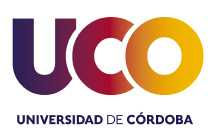MERGING SUSTAINABLE AND DIGITAL CHEMICAL TECHNOLOGY FOR THE DEVELOPMENT OF GREENER-BY-DESIGN PHARMACOLOGICAL (HORIZON-HLTH-2021-IND-07-01-101057430)
The EU-funded SusPharma project plans to design safe- and sustainable-by-design chemicals for use in pharmaceuticals. Researchers will use renewable carbon as the building block of scaffolds and motifs for drug synthesis and clean synthetic methodologies for C–X bond formation. Focus will also be placed on developing new continuous purification methods and performing technoeconomic and life cycle assessment analyses to assess the impact of the proposed pharmaceutical production methods. Ultimately, researchers will develop autonomous flow platforms for drug molecule synthesis using photocatalytic and electrochemical methods.
To address the challenge of green and digital transition and proper supply of health technologies and products, SUSPHARMA will focus on research and innovation activities that aim at integrating five breakthrough concepts: CAT-to-PHARMA, WASTE-to-PHARMA, FLOW-to-PHARMA, PUR-to-PHARMA, and DIGITAL to PHARMA. This will deliver results that are directed to pharmaceutical industries, researchers, and innovators, prompting them to develop and produce greener pharmaceuticals that are either greener by design, intrinsically less harmful for the environment, or use greener and economically more sustainable manufacturing processes and technologies.
Objetivos generales
- To develop greener routes to prepare halogenated drugs, such as therapeutics and diagnostics and repurposing of known drugs for new therapeutic indications.
- Use of renewable (bio-based) carbon for the pharmaceutical building blocks of scaffolds and motifs for drug synthesis; KPI: ˃ 30% more than benchmark (85% yield).
- Cleaner methodologies for C-X bond formation (that is, C-H functionalization to obtain C-C, C-F and C-I bond formation); KPI: new flow protocols, new reactions discovered, high productivity, high TOF.
- Development of new benchtop continuous purification methods, to remove impurities and recycle synthetic solvents.
- The project will thus derive benefits from interdisciplinary domains, involving recent advances in biomass conversion for drug synthesis; 3D printing of nanocatalysts, integration of digitalization methods employing automation and machine learning.
- Breaking through new developments in heterogeneous catalysis by means of cutting-edge flow chemistry technologies (including synthesis and purification)
- Repurposing of known medicines to reduce the impact of pharmaceutical production: digital and technological solutions will be applied to the production of new NSAID formulations for new therapeutic uses. KPI: at least two new co-crystals identified and produced on medium scale.
Papel de la Universidad de Córdoba
The role of University of Córdoba in the project is fractionation and upgrading of lignocellulosic biomass as well as transformation of biomass-derived platform chemicals into high-added value building blocks and scaffold.
The research team will be involved in the first three tasks (leading the WP2) with expertise in biomass/waste valorization (including selective fractionation and transformation to platform molecules for further upgrading), heterogeneous catalysts and Green Chemistry.
Datos de contacto:
Investigador Principal: Alina M. BALU
Correo electrónico de contacto: alina.balu@uco.es
Página web del proyecto: https://www.suspharma.eu/

